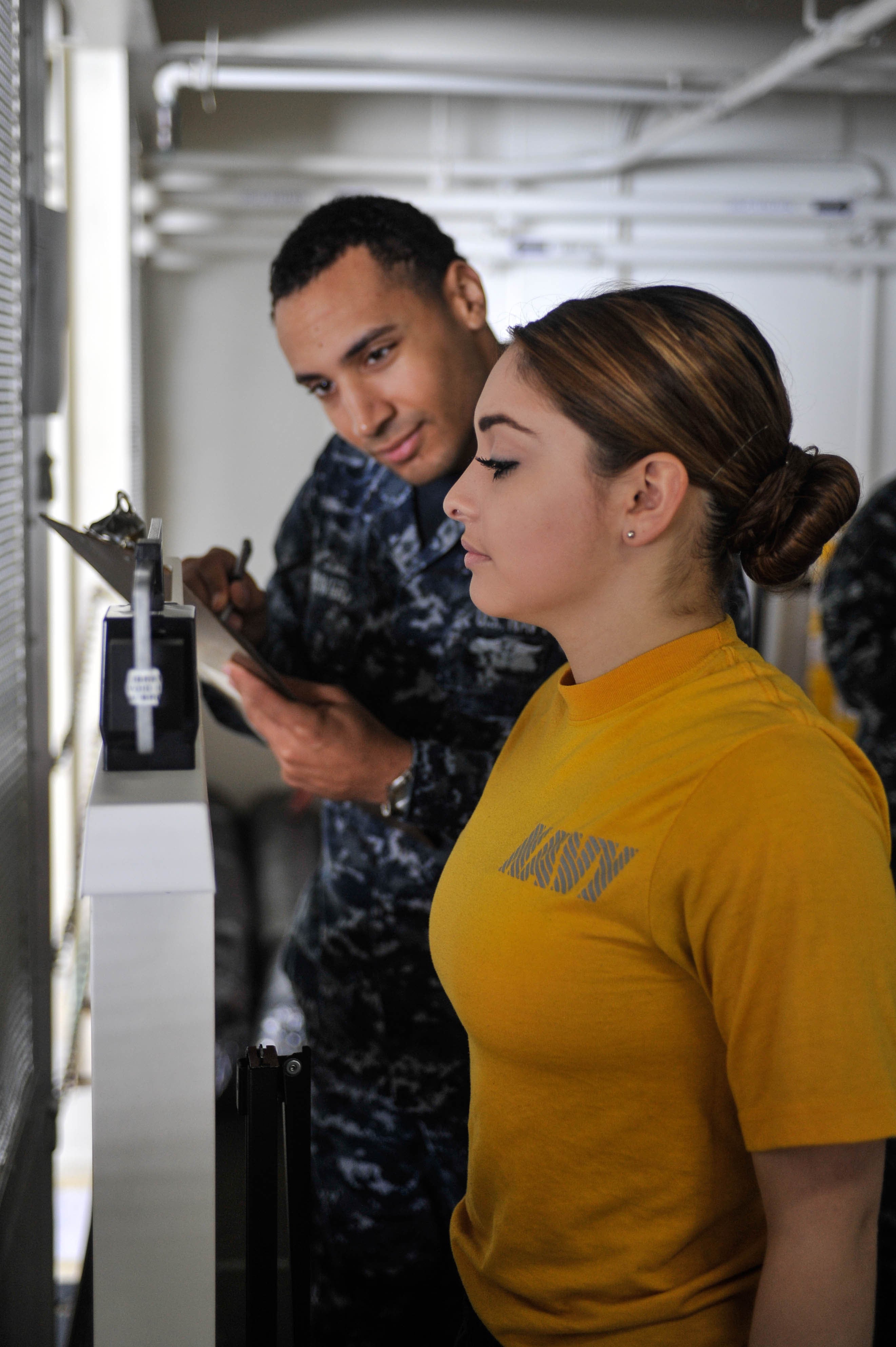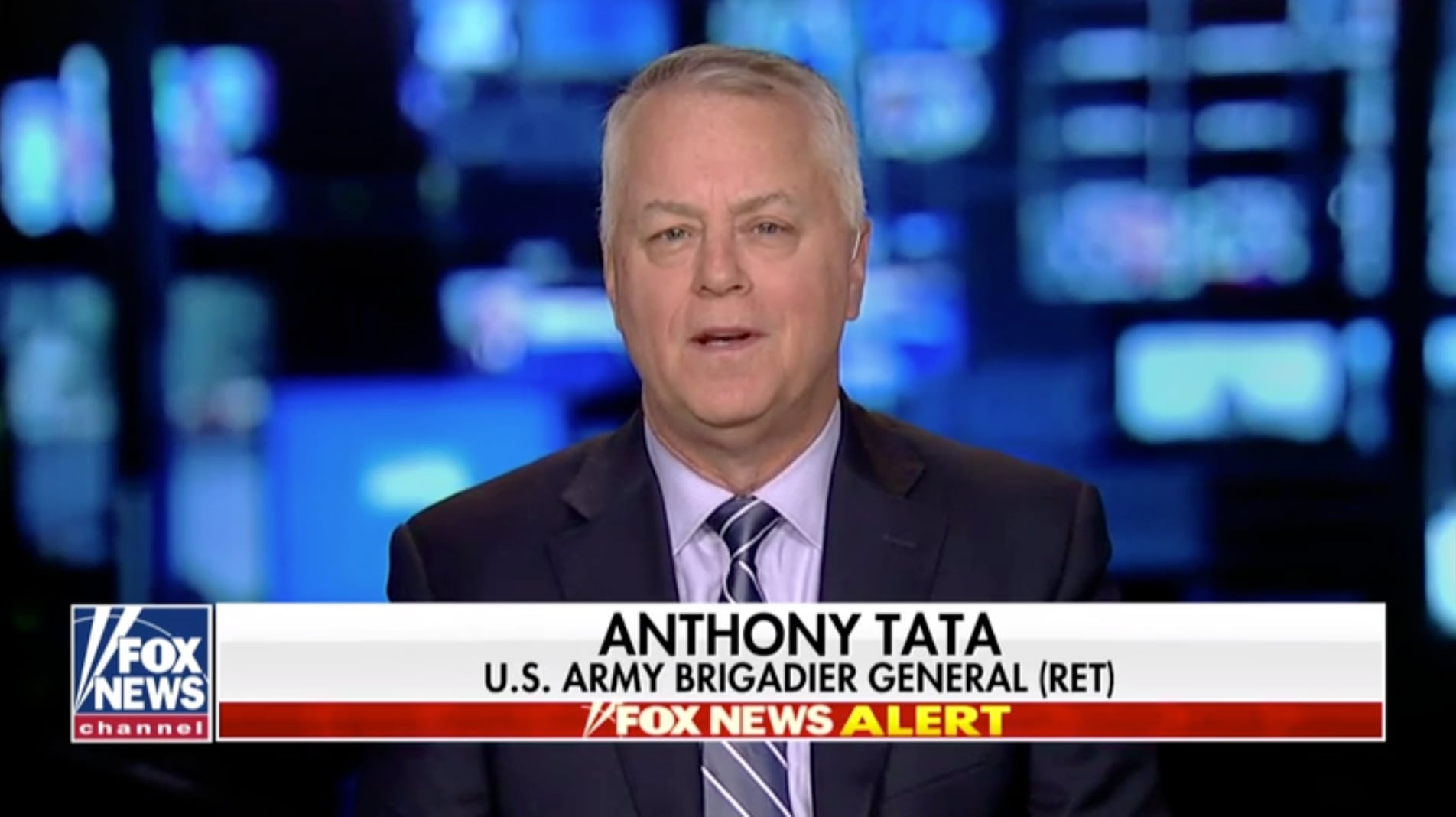Fitness amnesty is here — but it comes with strings attached.
Sailors facing separation for three physical fitness assessment failures in four years, and those who are one failure away from separation, are getting a chance to reset on Jan. 1their failures next year. and like anything in the Navy -- there's rules to get it.
In addition, the Navy is easing body-fat standards, and changing the way it administers the tape test.
The moves are an attempt to create a more realistic set of fitness standards that vary with both age and gender, keep more worthy sailors in uniform and, it is hoped, help establish a new culture of fitness that is less punitive but still draws a clear line as to what is acceptable and what is not.
Right now, Currently there's are nearly 34,000 active, full-time-support FTS and reserve sailors have failed the PFA once or twice within the past four years and face serious consequences if they fail again.two or more times within the past four years with two or more PFA failures. on the Physical Fitness Assessment who will be reset to one starting in January. And those who are getting kicked out for three failures in four years can stay. All these sailors need to do to activate their amnesty is Another 2,400 sailors already have three failures on the books — they mustIf they pass a real or mock Navy physical readiness test — the exercise portion of the PFA — this fall to activate their amnesty and begin , and they'll start 2016 with just one failure on their records.
But don't celebrate yet.In But there is a catch, in exchange for that one-time amnesty and the Navy's new, looser body-fat restrictions, sailors will now be administratively separated after two PFA failures in three years. the new rules also lower the administrative separation mark to two failures in three years. This means that anyone going into next calendar year with just one failure within that three-year window the past three years is just only one slip away from being booted.
The new are part of the Navy's an overhaul of how it assesses the fitness of sailorsin how sailors are assessed to be fit, with officials also aiming to boost fitness culture throughout the serviceNavy at commands.
It's the second set of changes rules changepolicy announcement since the Navy announced in August that it would change a new set of PFA rules and give those in August that a new set ofphysical readiness assessment rules was on the way, officials also confirmed that those facing separation or re-enlistment eligibility problems would be getting a break and an opportunity to continue their careers. shot to save their careers.
"If you really want to stay, and feel you have a shot, we’re going to give you that opportunity," Vice Adm. Bill Moran, the Navy's chief of personnel, told sailors during a web-based all-hands call on Oct.ober 6 when asked about the new policy.
"[The new policy] gives everybody an opportunity to reset their clocks; if you want to stay … and you have to the end of this calendar year to get there."
And more messages, impacting other fitness rules such as the promisedMore fitness-related changes, including details about the upcoming fitness award program, updates about the forthcoming fitness award and other details will be announced in separate messages before the end of the year, officials said, as they continue to say, to work toward improve the Navy's fitness program and make it not only more sailor-friendly and more closely aligned with today's fitness trends.to sailors, but also make it better based in today's fitness reality.
"Last year, we threw out over 1,500 sailors for BCA failures — 1,500 sailors who were enormously talented," Moran said. "Some of those sailors let themselves go and gave up trying to be in standard. They deserved to go. But for those who wanted to stay, but who were built differently … and maybe we didn’t give [them] the counseling and help [they needed]."
The Navy has learned, he said, that fitness is far harder to define than previously thought and includes much more than just a body-fat standard, he said.
"We needed wider variance in our standards to get more people to take the PRT and truly decide whether [they] you were healthy enough to assist ... your shipmates at sea in stressing situations," he said. "That ought aught to be the ultimate test."
We needed wider variance in our standards to get more people to take the PRT and truly decide whether you were healthy enough to assist your shipmates at sea in stressing situations — that aught to be the ultimate test.
The ose new BCA regulations take effect Jan. 1, but there are second chances are being offered now for those facing separation in the final months of this year, according to NavAdmin messageNAVADMIN 233/15, released Oct. 5.
Earning amnesty
All told, exactly 2,400 This situation applies to Currently 2,400 sailors have failed the PFA three times in four years and can now save their careers, according to official figures,-- who can now save their careers now.
The Navy's fitness program — especially how the services measures body fat and deals with those who don't meet standards — will go through massive changes on January 1. The main focus of this latest message is to lay out an "amnesty program" that will give all those who meet certain requirements before January a "reset" to just one fitness failure on Jan. 1
Even sailors who are currently in the For those on the bubble for or currently in the administrative separation process have an opportunity to remain , this means a chance to stay on active duty. The Navy is offering them the opportunity to extend their enlistment and pass their fitness test this fall. keep on the good side of the Navy’s fitness rules going forward. But Before you start the party, here's the details. there’s details here you must understand.More of those specifics are outlined in NavAdmin XXX/14 which was released on Oct. XX. The good news is that as of January 1,
This doesn't mean anyone is out of the woods. because The bad news is that those folks won't be out of the woods because Also starting January 1, the new rules that will change the admin separation threshold of three failures in four years shifts to a new line in the sand — two failures in three years.
Those who have three failures in four years — and are being The new rules are But the this NavAdmin mostly directed at those who have already crossed the three failure in four years — and are being administratively separated — now have a new shot to stay in. But that starts with passing their physical readiness test.
All told, 2,400 This situation applies to Currently 2,400 sailors who have failed the PFA three times in four years can save their careers, according to official figures,-- who can now save their careers now.
"This NAVADMIN NavAdmin is designed to clarify the administrative process for those sailors who are currently being processed out of the Navy between now and Jan. 1, 2016, for three PFA Failures in the past four years," said Lt. Cmdr. Nate Christensen, spokesman for the chief of naval personnel.
For admin sep sailors slated to discharge before the end of the year, the Navy is offering the chance to stay, for now and is offering them the chance to extend and try to pass their fitness test this fall. Even But those who have decided really just want to just take their administrative discharge and go home and get out should think twice; it could cost them a substantial amount of cash ; it coupod cost , because it could cost you cash.
That's because even though they’re on an administrative discharge track, opting out of the amnesty program turns their involuntary discharge to a voluntary one. Technically, they , because they are technically are turning down the chance to remain in uniformstay in. --
That situation makesing them ineligible for the involuntary separation pay that typically normally comes with a fitness dischargemost fitness discharges, according to the message said. A master-at-arms second class with eight years' service, for example, stands to lose $28,333.
"It is important for sailors to ask for an extension [of their enlistment] now so that an involuntary separation does not become a voluntary one," Lt. Cmdr. Nate Christensen, spokesman for the chief of naval personnel,Christensen said.
Currently, 230 sailors are slated to get the boot before the end of the year and will be given a one-time chance to extend and these sailors must act now to take part in the amnesty. To request amnesty, they must notify their chain of command of their desire for an extension, which who can submit their intent to Navy Personnel Command. hey must first tell the Navy they want to stay and submit it Navy Personnel Command through their chain of command and for now,
That will stop their discharge will stop in it’s tracks — temporarily — for now. Then, Still, to get the reset to one failure in the past three years on January 1, they must must pass a either a mock or official physical readiness test — pushups, sit-ups and run — by Dec.ember 1, 2015. This could be an official test or a "mock" test that follows the same rules.
Fail that PRT and the discharge process picks up where it left off, but now as an involuntary separation with no extra pay. no appeal. Those opting into the amnesty, but who fail their pushups, situps and run this fall will still be send home, but they will be eligible for involuntary separation pay.
Those with But there's also words of caution for others with multiple failures because hold rules are still effect until January 1 and continue to carry consequences for additional failures this fall.
On the bubble
If those facing separation pass their next PRT, then all 36,275 sailors with any PFA failures on the books will get begin the new year with just one on their record. reset to just one. But because the new rules put the separation threshold at two failures, anyone who's failed a PFA within three years of their next PRT in the past three years will be on the bubble in the new year.
If you failed a PFA last year and fail again this spring, you will be gone.
This fall also is critical to another group of sailors, the thousands who now have two PFA failures in the past four years and are scheduled to take their fall PRT soon.
Because the old policy is still in effect, These sailors are still on the bubble. Failure to pass their fall PRT will send them into the administrative discharge process, too because, the message says, they are not eligible for the reset or separation amnesty — and they’ll be processed immediately.
The message said says that For now, all the other administrative consequences of a PFA failure remain in effect, according to the message, and will likely continue in some form under the new testing and separation rules. These include the possible suspension of PCS orders and mandatory low eval marks — and being prevented from competing for advancement.
This means that mandatory evaluation knocks for fitness failures as well as advancement and transfer prohibitions also remain in effect the message says
Sailors with a PFA failure in the past three years will not be allowed to make a permanent change-of-station move, unless they passed their during their most recent fitness cycle.
Those with multiple failures Sailors with at least one failure in the past three years will remain ineligible to be recruiters, recruit division commanders, instructors, equal opportunity advisers or staff members in Washington, D.C., or at the Navy Personnel Command in Millington, Tennessee. Additionally, they will be disqualified for overseas billets and individual augmentee tours.
Many of these consequences are tied to the old three failures in four years threshold, with administrative consequences starting out light and increasing with the numbers of failures.
Personnel officials are in the process of determining how this will work under the new system, but those details have yet to be finalized.
But that's not all. Once the reset happens in January 1, any sailor going forward with one failure in the past three years is now just one failure away from an admin discharge under the new and stricter two failures in three years rule.
Amnesty sailorsSailors who earn amnesty this fall will will only be allowed to stay in the Navy one fitness cycle at a time. Keep passing your PFA each cycle and you're good to go, under the new rules. But fail just once again for either the body composition assessment BCA or the PRT PFA within the new three-year window, and you'll they’ll also be processed for administrative discharge, no exceptions.
Relaxed body-fat standards
The changes in The tightening of allowable failures coincides with new and easier body-fat standards.

Logistics Specialist 3rd Class Erika Orozco receives a body-composition assessment aboard the aircraft carrier Ronald Reagan in April. The standards of the BCA have been relaxed.
Photo Credit: MC3 Jonathan Nelson/Navy
Beginning Jan. 1, 2016, body-fat limits, which until now have been standardized for sailors under age 40 and those over 40, will be defined for four more age groups.go beyond the previous under-40 and over-40 age standards, with four new groups.
The new maximum body-fat standards:
- Men, ages 18 to 21, 22 percent
- Men, ages 22 to 29, 23 percent
- Men, ages 30 to 39, 24 percent
- Men, 40 and older, 26 percent
- Women, ages 18 to 21, 33 percent
- Women, ages 22 to 29, 34 percent
- Women, ages 30 to 39, 35 percent
- Women, 40 and older, 36 percent
"It's a little more stringent than the DoD standard, but a bit more graduated by age than the current BCA standard," Vice Adm. Bill Moran, the chief of naval personnel, told Navy Times in August. "It takes into account the physical changes that happen as we all age — so in that way, it's a little more realistic set of standards."
Next yearStarting in January, sailors who bust the height-and-weight chart will first get a waist-only tape test, maxing out at 39 inches for men and 35 ½ inches for women.
If you fail that, there's one more chance, with the dreaded "rope and choke" tape test that measures at the neck and waist (plus hips for women) and uses the numbers to calculate a body-fat percentage.
For those who exceed the Defense Department's maximum of 26 percent for men and 36 percent for women, it's a PFA failure. However, if you're just over the Navy's standard for your age group, but under the DoD's maximum limit, you'll be enrolled in the Fitness Enhancement Program.
"When you look at the science, there is an obesity standard out there that the American Medical Association uses," Moran said. DoD's maximum-allowed body-fat standards for men and women are based on that AMA standard.
"That's where we took the limits for our BCA," he said. "If you are above those limits, then you are obese and you must come down or you will leave the Navy."
What's next
There's been a lot of talk about the fitness program, especially a long-sought-after award for fitness excellence.
"We are in the initial stages of developing a PFA ribbon," Christensen said. "However, the eligibility criteria and timeline for release have not been determined at this time."
Moran said says he's open to looking at everything, and officials continue to evaluate other fitness options. That research includes and will testing wrist fitness-tracking devices early next year in both the active fleet and the reserve force to see if they that can help determine assist the Navy in determining sailors' overall fitness and help them maintain it.
Sailor feedback had a huge influence on the decision to update the BCA, Moran said. However, there is still the matter of the PRT, which many argue should — but doesn't — have events that mimic shipboard fitness requirements.
"We changed nothing on the PRT and there's plenty of argument that we could refine that, too, but we're taking this one step at a time," Moran said. "We're starting with the BCA, see how we do and then maybe adjust the PRT later on."
Mark D. Faram is a former reporter for Navy Times. He was a senior writer covering personnel, cultural and historical issues. A nine-year active duty Navy veteran, Faram served from 1978 to 1987 as a Navy Diver and photographer.
Meghann Myers is the Pentagon bureau chief at Military Times. She covers operations, policy, personnel, leadership and other issues affecting service members.





